Reptile & Amphibian
News Blog
Keep up with news and features of interest to the reptile and amphibian community on the kingsnake.com blog. We cover breaking stories from the mainstream and scientific media, user-submitted photos and videos, and feature articles and photos by Jeff Barringer, Richard Bartlett, and other herpetologists and herpetoculturists.
Friday, January 11 2013

Check out this Ambilobe Panther Chameleon gallery photo uploaded by kingsnake.com user vinniem1210.
Upload your own reptile & amphibian photos photos at gallery.kingsnake.com and you could see them featured here!
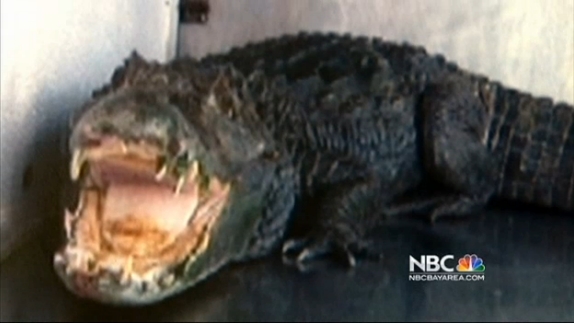 Mr. Teeth, a 16-year-old dwarf caiman seized in a drug bust in the San Francisco Bay Area earlier this week, died while being cared for by veterinarians at the Oakland Zoo. From NBC News:
Dr. Karen Emanuelson said the animal, which looks like an alligator, was actually a dwarf caiman. And when he came to the zoo Tuesday after an unusual drug bust, he was critically ill and non-responsive.
Veterinary staff said they examined Mr. Teeth, took blood samples and determined his prognosis was poor. Emanuelson confirmed Thursday that the animal died sometime in the night, but no one at the zoo would explain or discuss any more. It was not clear why the caiman, thought to be about 16 years old, died, or if guarding drugs at a man's house had any connection to his death.
Mr. Teeth was found in a tank with $100,000 worth of marijuana. The news story noted the reptiles require specific care and environmental conditions to be healthy, and that it was still not known if animal cruelty charges were being considered.
Read the full story here.
Thursday, January 10 2013

Check out this Ancon Hill Auratus gallery photo uploaded by kingsnake.com user leif .
Upload your own reptile & amphibian photos photos at gallery.kingsnake.com and you could see them featured here!
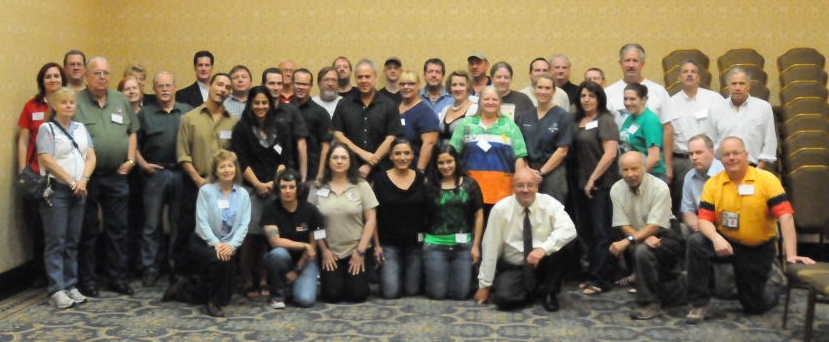 The reptile world has a wide variety of organizations. How do they all fit together?
This is how I see it:
The Pet Industry Advisory Council (PIJAC) is the largest and oldest pet business and pet-owner lobbying organization in the United States. I don't agree with all their policies or politics, but I do support their positions on reptile and amphibian issues.
This is an organization I've worked with for over ten years in an advisory role. In terms of beltway politics, they are the organization that the federal government and NGOs regularly turn to for pet- and herp-related issues, including pending regulation and legislation. They have had input on every major herp regulation implemented at the federal level in the last 40 years.
With management staffed primarily by attorneys, backed by the major pet industry players, and with a newly expanded reptile and amphibian advisory panel headed by Scott Hardin, formerly of the Florida Fish and Wildlife Commission, PIJAC is the go-to organization for herp issues in D.C. While they rarely receive press, and rarely claim victories publicly, they are the most effective organization at the federal level, and that should remain their primary focus.
What they have always lacked has been an effective mechanism to reach small businesses and individual pet owners, as well as an effective mechanism to deal with state issues. Additionally, with a focus primarily on the pet trade, they are less equipped to deal with aspects of our hobby such as venomous keeping.
The United States Association of Reptile Keepers (USARK) is the most effective organization we have for reaching the grassroots. It also can work in issue and advocacy areas that PIJAC doesn't or can't, particularly with small business and pet owners. It should work hand in hand with PIJAC to insure our community is represented both nationally and a state level. In turn, PIJAC should work with USARK to utilize the input from the USARK member base in the most effective way, providing support on state issues when requested, and requesting support from the USARK membership on national issues as needed. USARK has the best tools and structure to assist states directly as needed and requested by state-based organizations and members.
The National Reptile and Amphibian Advisory Council (NRAAC) provides educational support, and draws different organizations and agencies concerned with reptiles, amphibians, and the law together to discuss -- in a non-political and non-confrontational manner -- the laws and regulations effecting reptiles, amphibians, and people at an annual symposium.
NRAAC should continue on with its annual conference, taking it on the road to a new location every year, and should continue with projects such as the national reptile and amphibian law database, and other informational and educational projects that benefit the community as whole.
As a non-member, all-volunteer organization, NRAAC needs to draw on the resources of PIJAC and USARK and its membership for support, financial and otherwise. NRAAC should invite federal and agencies as well as NGOs to sit on its various steering committees to help determine the direction of the organization and its symposium, and will be doing so in 2013. NRAAC is not a lobbying organization.
Herpetological societies, clubs, and organizations, such as the East Texas Herp Society and Chicago Herp Society, draw herp people together from many disciplines, providing a social network, acting as trip-wire on state and local issues, and providing a strong network of support locally.
As a community, we need more and stronger herp societies to help promote education and rescue efforts, provide information, and give and receive input on regulatory efforts on state, local, and national level. Herp societies should be the backbone of dealing with most state regulatory efforts.
In cases where the societies are unable to step forward or do not exist, USARK and PIJAC should put the systems in place to provide support to their members in those states. USARK and PIJAC should both work to expand the loose herp society network that is already in place, even though herp societies are not, and should never be, lobbying organizations.
The Association of Reptilian and Amphibian Veterinarians (ARAV) also has a significant role to play in the community. Without their input, many of the things the other organizations are trying to accomplish would simply be impossible. They provide much of the research that makes the other organizations effective, help train the herp veterinarians of tomorrow, care for our pets, and help to recognize the rise of pathogens that may harm our animals and our community.
The ( Association of Zoos and Aquariums) (AZA) also plays an important, and often overlooked, role in our community, with many zoo professionals having started as hobbyists. Zoological parks and aquariums play perhaps the most important part, teaching youth the value of animals, habitats, and ecology and giving many children their first hands-on experience with reptiles and amphibians.
These facilities also act in many cases as "arks" for critically endangered species, providing controlled captive breeding programs that allow some species to survive in captivity when their wild compatriots have vanished, and allowing for re-introduction when appropriate. Also important is the research they do on those same species, and on many less-endangered native species.
Partners in Amphibian and Reptile Conservation (PARC) plays the important role of connecting all these disparate organizations upstream to federal and state agencies, as well as conservation-focused NGOs like as the Sierra Club and World Wildlife Fund to promote conservation of reptiles and amphibians nationwide and worldwide.
Reptile and amphibian rescues, such as Small Scale Rescue and VA Reptile Rescue are the final link in the organizational chain, providing important support to both wild and captive reptiles, as well as injured, abandoned, or confiscated animals. Usually overlooked and overworked -- and always underfunded -- these organizations need to be embraced by both USARK and PIJAC, and given assistance in formalizing their structures as needed and requested. The network of rescues needs to be strengthened and enlarged, with more support provided by the organizations and community.
What role do you see for organizations in our community? Are there any that I have missed?
Wednesday, January 9 2013
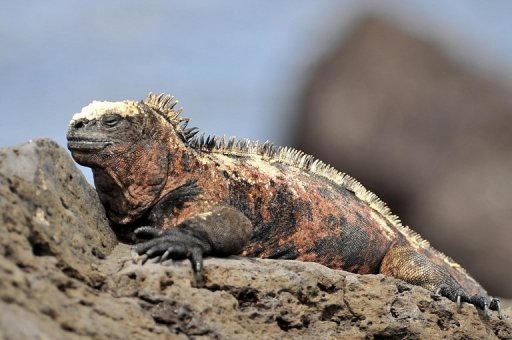 An Ecuadoran court has convicted a German man of trying to smuggle four threatened iguanas out of the Galapagos Islands.
From Phys.Org:
Dirk Bender was convicted "of having altered the local ecosystem of the archipelago," park authorities said.
The Galapagos National Park has requested the maximum four-year jail term for Bender, who should be sentenced in the coming days.
Bender was arrested at the airport on Baltra Island on July 8 after park officials noticed him carrying a suspicious package, which was found to contain four lizards wrapped in canvas.
The hidden reptiles were Galapagos Land Iguanas (conolophus subcristatus), which the International Union for Conservation of Nature ranks as "vulnerable" on its Red List of Threatened Species.
Read the whole story here.
Monday, January 7 2013
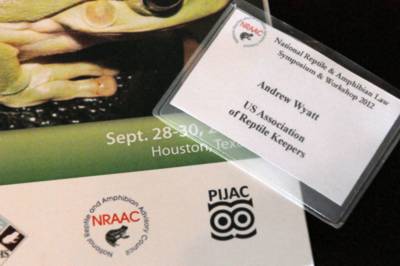 In the business world, CEOs and presidents are fired, resign, or move on to other things every day. Sometimes they resign to move on to bigger and better things. Sometimes they resign because of a difference of opinion with their board. Sometimes they resign in lieu of being terminated, sometimes because the board has lost faith, sometimes because of gross incompetence or dishonesty, and sometimes because criminal activity has been uncovered. It's tough to read between the lines in press releases, but in the business world if an executive move is lateral or downward, you can usually bet the resignation wasn't by choice.
Sometimes these management changes signal a change for the worse in an organization, and sometimes it's a change for the better. Rarely does it signal impending doom -- it's far more likely it simply signals a change in direction. In the case at hand, the changes are for the good, and signal a change in direction: the right direction.
I'm talking about the recent resignation of USARK's Andrew Wyatt. Since USARK's inception, I have withheld support of the organization out of concern over the individual at its helm. Some believed it was, and Wyatt himself always passed it off as, personal animosity, but that's not the case.
Having already started and been involved with a similar lobbying organization in the years from 1997-2002, I was familiar with the problems and obstacles such an organization faced, and therefore did my best to steer everyone toward using assets already in place rather than creating the expense, burden, commitment, and risk a new organization would entail.
I also knew that, once started, it would forever need to be fed, in ever-growing amounts of money. I knew such an organization would need to be geared up to operate for 20+ years, and raise millions of dollars. And I knew that the easiest, fastest way to raise early money was to start yelling "fire" all the time -- a battle cry that would inevitably backfire and be destructive to our community and our hobby.
Which is exactly what we saw happen with the constant drumbeat of disaster Wyatt put forth from USARK during his tenure. And just as I feared, it frightened away consumers and businesses, putting downward pressure on an industry and hobby already staggering under the weight of a bad economy.
I also kept my distance from Wyatt's organization because it didn't pass my due diligence.
Websters defines "due diligence" two ways: First, as the care that a reasonable person exercises to avoid harm to other persons or their property, and second, as the research and analysis of a company or organization done in preparation for a business transaction.
As part of that process, I looked at everything I could find pertaining to the organization and the individual running it. Neither the strategy being employed, nor the lack of transparency, nor the possibility of harm, gave me confidence in either.
I was also concerned about the structure of USARK, which left all the power concentrated in the hands of one individual, the founder, with a board of directors limited in its ability to assert control should he choose to take the organization down a wrong path.
Even more troubling to me, that individual had no legal background, no lobbying background, and no corporate background. In fact, as far as I could tell, his knowledge of and background in the herp community and industry was limited. I knew that there would be hundreds of thousand of dollars required to do what he was proposing, and at risk would be an industry with thousands of businesses and individuals involved, worth millions. Despite this, it seemed that something as basic as a relevant background investigation had never even been run.
Finally, I knew that as long as Wyatt was in charge, it would be his organization, not the board's, and certainly not the "Reptile Nation's."
So I withheld kingsnake.com's support, and my support, until Wyatt and USARK could prove themselves.
In the following years, Wyatt, did nothing to prove me wrong. In fact, it almost seemed that he did everything to prove me correct, repeatedly. Evidence and allegations of bad management were rife, including loose controls over cash flow and expenses, excessive travel for limited gain, lack of transparency as to how funds were spent, poor messaging and messaging protocols, and USARK officers carrying on inappropriate personal relationships with USARK volunteers at industry trade show events.
As USARK gained momentum and voice, Andrews' "house on fire" tactics took a greater and greater toll on hobbyists and businesses, turning what had been a rapidly-growing industry into one that slowed, then stopped, then began to reverse course.
I repeatedly raised numerous questions and concerns to Andrew, to the USARK board members, and to the community. I pointed out that the path we were headed down was damaging us as an industry and community. Wyatt continued to paint this as a personal issue, and publicly labeled me as "divisive" every chance he got.
Perhaps for that reason, the USARK board disregarded my questions and warnings, and I never got the information and answers I was looking for. My opposition to USARK's leadership, policies, and direction became well known not only in the back channels where I tried to keep them, but publicly as well -- so well-known, in fact, it negatively impacted my business, my friendships, and my personal relationships in the community.
In the spring of 2012, feeling almost desperate about the direction our hobby was moving in and hoping to rebuild some of the bridges Wyatt was burning, I helped start a reptile law education organization dedicated to putting on a reptile law symposium, the re-purposed National Reptile and Amphibian Advisory Council (NRAAC).
NRAAC was indirectly threatened with, and ultimately suffered, a "blackout" by industry leaders and media connected to the USARK organization. Others in the community were pressured by USARK, both directly and indirectly, not to participate in the organization or the symposium. Virtually the only press we got was on kingsnake.com. I was even told, by one long-time customer, that he could not accept my event's advertising, free or paid, for fear of upsetting USARK.
The blackout dramatically impacted our ability to market the event and directly limited the participation by the community in the very first national reptile law symposium. Were it not for the federal and state agencies, as well as PIJAC, the ARAV, and especially the ETHS, the event would have foundered. Thanks to them, it was a huge success.
I'd like to address another issue that demonstrates how Wyatt put his own personal agenda ahead of the well-being of our hobby. Wyatt and another USARK officer, Ericka Walsh, claimed that they were unaware of the Symposium until it was too late to attend, and that they were not invited to participate. This is demonstrably untrue. We invited USARK directly via email from our site coordinator. Despite the lack of response to our invitation, we even had a badge prepared and waiting for Wyatt at the event, should he have decided to appear at the last moment.
But Wyatt didn't appear. Nor did Walsh.
Neither did Dave and Tracy Barker, who were also invited to represent either USARK or their own business, or both, despite Dave being invited by me personally during the Snake Days event in Sanderson four months previously, and receiving multiple email invites. Wyatt, Walsh, the Barkers -- not one of them could see the need to sit down and talk with the specific federal agencies, and the specific individuals within those agencies, tasked with deciding the fate of Boa Constrictors and Reticulated Pythons.
Fortunately, less than a week before the event, Gary and Shane Bagnall made arrangements to participate, guaranteeing USARK at least some representation.
So here we are today.
Andrew has "resigned" under what most people see as the proverbial "mysterious circumstances." He is predictably painting himself as the martyr in the situation, and is trying to divide the community by launching an organization directly competing with USARK. He is using what is essentially a generic cover story to explain his exit, and to justify the need for the existence of this new organization, to launch it, and to once again ask you for your money. And he is hiding the facts behind a non-disclosure agreement that masks the real circumstances of his exit. Talk about being "divisive."
Maybe you're considering supporting Wyatt's new organization. Maybe you believe his claims that only he, not USARK and its board, nor anyone else in the herp community, really cares about your interests. Maybe you just don't want to make him into an enemy.
Fine. But before you support any organization headed by Andrew Wyatt, you should ask him the questions I'd like to have asked him over the last three years (and tried to). Under oath.
Here are five questions for Andrew Wyatt, below the jump -- add yours in the comments!
Continue reading "The exit of Andrew Wyatt"
Sunday, January 6 2013
Check out this 2010 Two-Headed Bearded Dragon video submitted by kingsnake.com user RoachMei.
Submit your own reptile & amphibian videos at http://www.kingsnake.com/video/ and you could see them featured here or check out all the videos submitted by other users!
Friday, January 4 2013
 As expected and predicted, HR 511 expired when the House adjourned, once more "saving" boas and pythons from the clutches of federal legislators just in the nick of time. Before we go around patting ourselves on the back, shooting off fireworks, and waving victory flags, consider this.
Logistically, HR 511 and all its predecessors never had a chance of passing, regardless of what either side said or how either side spun it.
Without question, based on the laws of statistics alone, the same or a similar bill will reappear again in 2013 or 2014 under a new HB or SB number, and it, too, will die a long, slow, tortuous death -- but not until after all the lobbyists on both sides spend months making speeches, giving interviews, asking for money, soliciting support, and claiming victory. And then it will happen again in 2015, 2016, 2017...
Beginning to see a pattern here?
There has never, ever, been a House Bill or Senate Bill specifically regarding any reptiles or amphibians that has ever -- ever -- been signed into law by a President. And odds are, there never will be. Statistically. Realistically. The path for most federal legislation is long, fraught with blind turns, and usually reaches a dead end. It's even more so for herp-related issues. For it to actually happen is almost a mathematical impossibility at this point.
Does this mean boas and pythons are safe? No. The remainder of the "Big Nine," the ones that the Fish and Wildlife Service didn't ban last January, are in still in limbo at the federal level. And they can be banned any moment, at the stroke of a pen, without hearings, requests for comment, or a chance to write letters to senators. All that is left is the decision.
And at the state level, things change all the time, and boas, pythons, and many other species are constantly at risk.
There is still so much work to be done, and there are still bridges to be built (and some that need to be re-built). We have to work smarter, not harder, and we need to continue to work toward resolving our issues with the agencies involved.
We need to stop scaring everyone with threats that may never actually materialize, and focus on the threats that are real, and deal with them with a much more reasoned, effective response. And we need to stop running the flag up the pole every time someone introduces this bill, or that resolution, and calling out the militia and scaring away hobbyists and businesses.
As a community, we have worked a long and hard road to build systems to respond to and manage these threats. Along the way we have done many things right, and we have done many things wrong. But while I know there's no doubt the threat to our hobby and our community is real, there's also no doubt that, given a reasoned, effective, organized response, it's also very manageable.
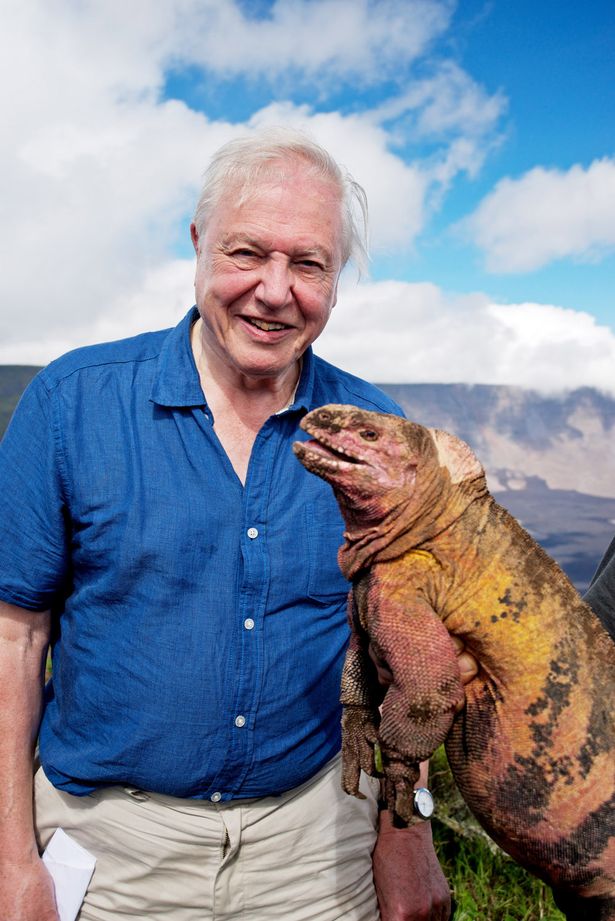 In his new series on the Galapagos, Sir David Attenborough has captured a rare pink iguana on film for the first time. “It’s a remarkable thing in this day and age when you think about the number of scientists per square metre in the Galapagos, and yet suddenly we have discovered a new species,” Sir David said. Read more...
In New York, the Bronx Zoo welcomed five Chinese yellow-headed box turtles as part of a part of a Wildlife Conservation Society effort to save endangered turtle species. Caution: Cute alert. Read more...
Biologist Michel Garey discovered a new species of tiny, three-fingered frogs, back in 2007, and last summer, the little critters got a name: Brachycephalus tridactylus. The story of the frog species' discovery was published in Herpetologica, a journal about the study and conservation of reptiles and amphibians. Read more...
Thursday, January 3 2013
 You might have heard the story on NPR, or seen it come across the wires or your Google alerts: A North Carolina man was arrested, charged with felony animal cruelty, and held on a $20,000 bond for allegedly shooting his pet python.
It's not at all clear what happened -- initial reports didn't include the shooter's side of the story, and he's now claiming the snake, named "Anonymous," was a beloved pet who was already dead when he shot him. From the Charlotte Observer:
“I couldn’t bury him or the other animals would get him,” Ericcson told NBC Charlotte, the Observer’s news partner. “I had to shoot it to get the gas out of him, then I was going to burn him.”
Ericcson said the snake was his pet for about 17 years. “I’ve had that snake since he was so small he could just wrap around your wrist,” he said. “Me and my wife can’t have kids, so the animals are our kids.”
Ericcson claimed he was so distraught over the snake’s death, he shot up the large cabinet that contained his Dale Earnhardt collection.
Setting aside the made-for-reality-TV elements of the story, the extraneous details, and the conflicting news accounts, focus on just one thing: In North Carolina, the media is uniformally referring to a python as a "pet," and authorities charged someone who allegedly shot a python with felony animal cruelty.
In Florida, they're paying bounty on killed pythons. In North Carolina, they're protected pets. Go figure.
H/T to Alex Scharnberg for the tip.
Wednesday, January 2 2013
 The United States Association of Reptile Keepers (USARK) has issued a formal statement on the future of their organization and the recent resignation of its CEO and president (also available in PDF):
USARK announces that Andrew Wyatt has tendered his resignation as CEO and president of USARK, the organization that he co-founded in 2008, due to philosophical differences and in order to pursue other interests, effective December 31, 2012. USARK wishes Wyatt well on his future endeavors and Wyatt wishes nothing but the best for the reptile industry.
USARK is the largest, and most well-funded, pro reptile-keeping organization in the history of US herpetoculture. Going forward, USARK has an aggressive game plan for 2013 which includes:
1) Defending against federal legislative and requlatory restrictions: In 2011-2012, USARK successfully blocked HR 511 which would have prohibited the import and interstate transport of nine constrictor species. USARK remains committed to defeating any and all similar legislation in the new Congress which convenes this week in Washington and to keeping up the pressure on the USFWS to prevent the addition of additional species as injurious under the Lacey Act. To advance this goal, USARK is compiling an up to date inventory and analysis of all new studies and related publications rebutting the USGS findings that have been published since the public comment period on the rule ended. Additionally, USARK will work diligently to put USFWS on notice that no final rule should be made without the opportunity to submit new information for the record, and for consideration for any future rulemaking on this issue. New research that has come to light undermines the current justification for ruling in favor of banning constrictor species.
2) State legislation & USARK - Mobilizing the Grass Roots: USARK is committed to working at the grassroots level to ensure that our voices are heard By Reaching out to major herp stakeholders (reptile breeders) in each state and setting up USARK Stakeholder Ambassadors to help fight anti-herp legislation in locally, we can make a difference. USARK will offer expertise and support in fighting anti-herpetoculture legislation, in addition to offering the services of a lobbyist to help in the fight at the state level.
3) CITES and the United States Endangered Species Act: Currently, US taxpayers are paying to fund studies of non-native species that are listed on the US Endangered Species Act. There are just over 2000 total species listed under the US Endangered Species Act, of which over 600 species are foreign and are not native to the USA. These species are already protected through CITES (Convention on International Trade in Endangered Species) of which the USA is a member. There is no need to further protect foreign species by listing them under the US Endangered Species Act, which restricts ownership, prevents establishment of assurance colonies, and prevents US breeders from moving these animals across state lines or exporting them out of the USA (including export back to their range country).
4) USARK & NRAAC: This past year, the NRAAC put on the first annual Reptile and Amphibian Law Symposium & Workshop which was cohosted by PIJAC, the ARAV (Association of Reptilian & Amphibian Veterinarians), and the East Texas Herp Society. This event brought together major stakeholders from industry with lawmakers and government officials that play a key role in herp-related legislation. The NRAAC has proven to be an important resource for news, education, and serves as a vehicle to bring together people and organizations to discuss important issues. USARK’s president of the Board, Gary Bagnall, attended the 2012 symposium. USARK fully supports the efforts of the NRAAC and is looking forward to working closely with the NRAAC in 2013.
5) USARK & PIJAC: USARK is committed to working closely with PIJAC (Pet Industry Joint Advisory Council) on the issue of the release/escape of non-native species in the US. This is an extremely important issue for the reptile industry and for USARK stakeholders. PIJAC has a 10 year head start on this issue and USARK needs to partner with them and report back to you, our esteemed membership.
6) EDUCATION: Produce a series of educational videos starting with the proper husbandry and handling of large constrictors. We need to be proactive in this area to show that we are a responsible industry.
USARK BUDGET: Last year USARK brought in $300,000 of which 35% went to our lobbyist in Washington DC, 30% went to the former president’s salary, and 30% funded operating expenses (travel, hotel, t-shirt printing, etc.). In order to operate effectively, we need to raise $500,000 annually which will allow USARK to hire a full-time office administrator, fund important scientific studies, and pay expensive legal fees in the fight against anti-herp legislation.
WE NEED YOUR SUPPORT! If you have not renewed your membership, please visit the USARK website and do it now. You are a stakeholder and each member is very important to USARK. It is your membership that enables USARK to protect our rights to keep reptiles and amphibians in captivity! Your support of just $5 a month can make a BIG difference!
BREEDERS, PROFESSIONALS & MAJOR STAKEHOLDERS (you know who you are): USARK has a new membership category called “USARK Platinum Member”. If you pledge $1000 per month to USARK for 12 consecutive months, you will enjoy the following privileges:
• A seat on the USARK executive platinum committee.
• A USARK Platinum Member plaque to hang in your home or business.
• A USARK Platinum Member banner to put on your website.
• T-shirts for your entire staff (up to 20 shirts).
• An invitation to our annual USARK executive committee dinner for up to 4 people in your organization.
The organization can be contacted at this link.
 Ever wanted to use kingsnake.com on your smartphone? Now you can.
Today, kingsnake.com launched a fully-featured mobile site, including the classified ad system, the site's most-trafficked destination, as well as its popular locators for zoos and herp-related events, veterinary services, breeders, supplies and services, and rescue groups.
Mobile users can view and post classifieds both locally and nationally, including uploading photos. They can also search for reptile breeders and businesses, find a local pet store, check reptile and amphibian laws, and more. With After Dark mobile, they can even find that special herp-friendly "someone," desktop-free.
Located at http://mobile.kingsnake.com, the site is designed specifically for smart phones that are touch-screen enabled. While still considered a beta release, the mobile site has been tested on a variety of a variety of iPhones, Androids and Blackberrys, and several different mobile OS and browsers.
Although primarily designed for smartphones, the site is also tablet-compatible.
kingsnake mobile is just the first of a number of cool projects in the pipeline, so stay tuned for more development news from kingsnake.com in the New Year.
Tuesday, January 1 2013
 United States Association of Reptile Keepers (USARK) President Andrew Wyatt announced his resignation from the organization yesterday, leaving many in the reptile world to wonder what will happen with the current organization and its assets.
Board members are preparing a statement and are not ready to comment officially yet, but did confirm to kingsnake.com that the USARK organization will continue to operate under the direction of the board until such time as a suitable professional candidate has been found. The board is currently reviewing a number of prospective candidates and say they hope to come to a decision soon, and that USARK will continue to move forward in representing its members interests in 2013.
USARK's board currently consists of members of some of the oldest and largest businesses in the reptile community, including Zoomed, Timberline, and LLL Reptile.
kingsnake.com has offered support and assistance to the USARK board in helping it reach its goals in 2013. We hope the changes brought about by the leadership transition will signal a fresh new start for the organization and the community.
Additionally, the National Reptile and Advisory Council has extended an invitation to USARK to co-host the 2013 Reptile & Amphibian Law Symposium in Washington D.C., alongside the other confirmed hosts, which so far include the Association of Reptilian and Amphibian Veterinarians (ARAV) and the Pet Industry Joint Advisory Council (PIJAC).
Best of luck to USARK as it begins a new year.
Thursday, December 27 2012
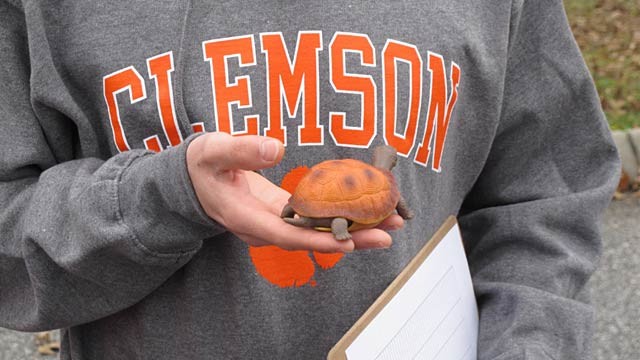 If you've always suspected some people -- maybe even a lot of people -- went out of their way to run turtles over with their cars when they encounter them in the road, now there's data backing up your hunch. From ABC News:
Clemson University student Nathan Weaver set out to determine how to help turtles cross the road. He ended up getting a glimpse into the dark souls of some humans.
Weaver put a realistic rubber turtle in the middle of a lane on a busy road near campus. Then he got out of the way and watched over the next hour as seven drivers swerved and deliberately ran over the animal. Several more apparently tried to hit it but missed.
"I've heard of people and from friends who knew people that ran over turtles. But to see it out here like this was a bit shocking," said Weaver, a 22-year-old senior in Clemson's School of Agricultural, Forest and Environmental Sciences.
To seasoned researchers, the practice wasn't surprising.
The number of box turtles is in slow decline, and one big reason is that many wind up as roadkill while crossing the asphalt, a slow-and-steady trip that can take several minutes.
Read the whole sickening story here.
Monday, December 24 2012
All of us at kingsnake.com wish all of you a very Merry Christmas!
 Photo: From our 2009 "Holiday Herp" photo contest... uploaded by bloodpython_MA. Let him know you liked it here!
Photo: From our 2009 "Holiday Herp" photo contest... uploaded by bloodpython_MA. Let him know you liked it here!
Sunday, December 23 2012
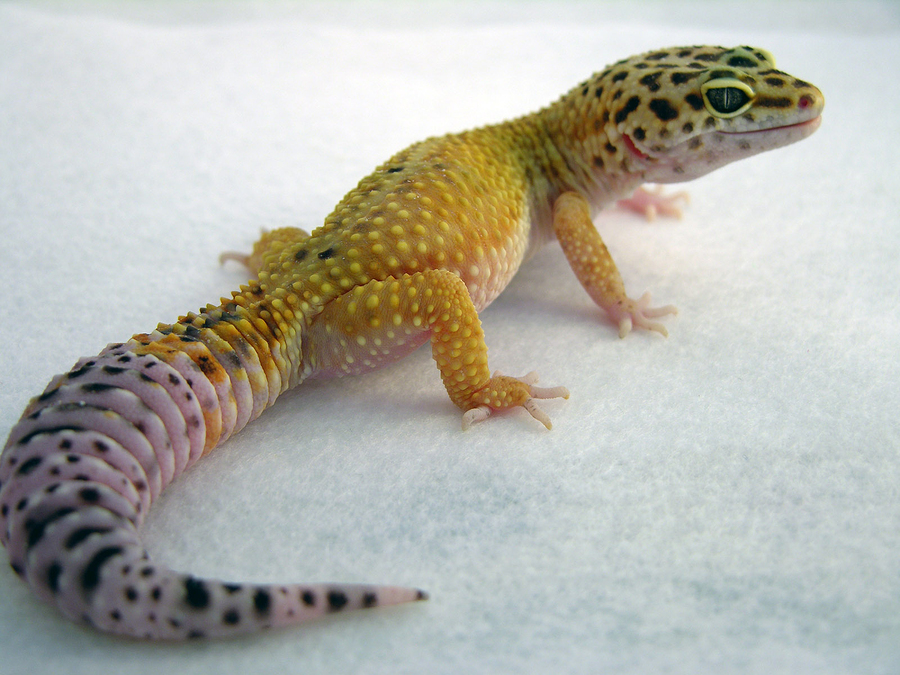 In addition to his super-sticky paws that help him rival Spiderman for climbing sheer walls, the mighty gecko also has a tail optimized for predator-resistance. From MSNBC:
Like a pair of Velcro stripper pants, gecko tails come off easy. The lizards have pre-formed score lines in their tail that allow them to quickly rip off their tails when a predator has grabbed it, according to a new study.
The gecko tails, which were described Wednesday in the journal PLoS One, essentially stick to the body of the animals with adhesive forces.
"The tail contains 'score lines' at distinct horizontal fracture planes where the tail may be released as a response to predation," the authors wrote in the article. "These scores penetrate all the way through the tissue where the structural integrity is maintained by adhesion forces."
The article points out it's long been known that many species of reptile and amphibian shed their tails to evade predators, but this is the first time the exact mechanism by which that occurs has been identified.
Get the story , and, if you're a science wonk, the actual study here.
Friday, December 21 2012
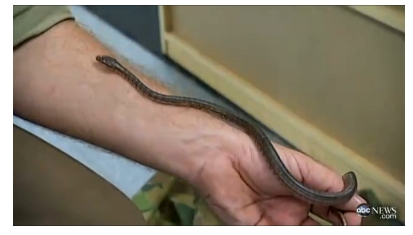 Something strange seems to be happening with snakes and toddlers down under!
After a story earlier this week about a three-year-old boy who tucked a nest of eggs into his bedroom closet only to have them turn out to be venomous snake babies, we've got this: A mama python who birthed her babies in a daycare center. From ABC News:
Australian officials shut down a day-care center in the Northern Territory Thursday because of an infestation of at least 23 baby pythons and their much larger mother.
It all started Wednesday, when a single hatchling Australian carpet python was spotted at the Mitchell Street Childcare Center in Darwin. The following day, seven more little snakes were seen slithering around the community center, which cares for children 6 weeks to five years old.
Director Louise DeBomford called the city of Darwin and two contractors were sent to investigate the issue. They peeked inside the center’s walls and discovered something shocking.
“They found the nest and mum,” DeBomford said.
Their 10-foot-long mom, to be specific. The wall contained a total of 41 broken eggshells, suggesting there were still nearly 20 foot-long serpents unaccounted for.
Amazing, really, that even though nothing happened and the children were not only not scared but responded positively to the snakes, the media still managed to work in a "python eats baby" angle. Read the full story here.
Thursday, December 20 2012
 I don't know what's worse, frankly: the appalling conditions that Global Captive Breeders owner Mitch Behm allegedly kept his animals in, or their fate after the raid made by authorities and animal rights groups, ostensibly "for the animals' protection."
According to an article in today's Sacramento Bee, Behm surrendered all his animals to authorities, and 18,000 rodents and 600 reptiles were "euthanized" as the "most humane option."
Certainly many of the animals, especially the reptiles, could have been placed into the hands of the many rescue organizations geared specifically for treating and caring for surrendered, abandoned, neglected or confiscated reptiles across the U.S. This safety network has long been in place and has been supported by the community for over 20 years, and certainly dozens, if not hundreds, of the reptiles could have and should have been saved.
"A team of veterinarians, reptile specialists and animal cruelty experts determined that because of extreme neglect, cruelty and dangerously unhealthy conditions, euthanasia was the safest and most humane option."
While the article specifically states over 18,000 rodents and 600 reptiles were euthanized, it neglects to mention - how many were saved?
How many of those animals confiscated by authorities survived the raid and were placed into the rescue system?
How much time was actually spent, by experts, examining each of the 18,000+ animals to see which ones could be saved?
Did every single animal die?
Did every single animal have to die?
If someone knows the answers, please tell us.
These are questions we should all be asking. And we should be asking the City of Lake Elsinore. Because they killed those animals. 18,000 of them. Not Mitch Behm.
Lake Elsinore City Hall
130 South Main St.
Lake Elsinore, CA 92530
Phone: (951) 674-3124
Fax: (951) 674-2392
Email: cityhall@lake-elsinore.org
 Yet another kingsnake.com system has undergone an overhaul. This time, it's the reptile and amphibian events system that's had a winter makeover.
No longer just displayed as a long, linking list of events, reptile and amphibian event listings are now searchable by state and province, as well as zip and postal code. A new detailed listing section includes a phone number, the street address of the event, and a map link to help herpers find their way to the event venue.
Further upgrades to the reptile and amphibian events system in 2013 will allow event promoters to manage and edit their listings, as well as add more information about their event. Event listings are still displayed in the old format as well, on the events page, in numerous tabbed locations throughout kingsnake.com, and in the news scroll in the header.
The events system is already chock full of 2013 reptile and amphibian expos and events, so click here and give it a try, and see when the next reptile show is coming near you!
If you have a reptile or amphibian event in 2013 and need to get the word out, listing it in kingsnake.com's event locator system is the best way to reach herpers across the globe. With a 15+ year history of reptile event listings, kingsnake.com is the first place most herpers go to find out where the shows are.
To find out more about how you can list your upcoming reptile and amphibian event, check out the events page at http://kingsnake.com/events.
Wednesday, December 19 2012
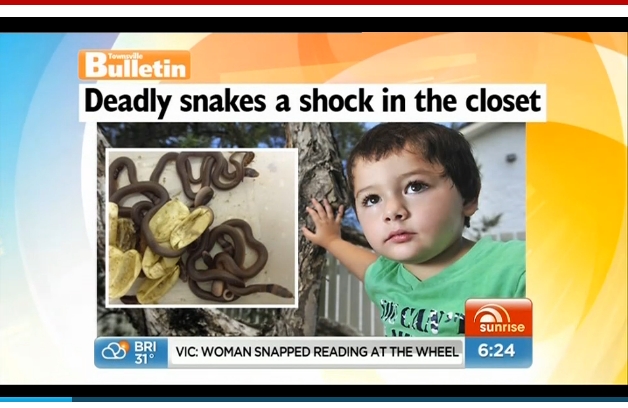 An Australian mom got the shock of her life when she found the eggs her three-year-old son had hidden in his bedroom closet had hatched.
From Yahoo News Australia:
Inside were seven baby eastern brown snakes, considered to be the world’s second most venomous species.
"I was pretty shocked, particularly because I don't like snakes," she said.
Fortunately the lid of the container was on tight and the snakes weren’t yet mature enough to push it off.
Kyle and his mum took the snakes to Billabong Sanctuary where wildlife careers released them back into the wild.
Read the story and watch the video here.
Tuesday, December 18 2012
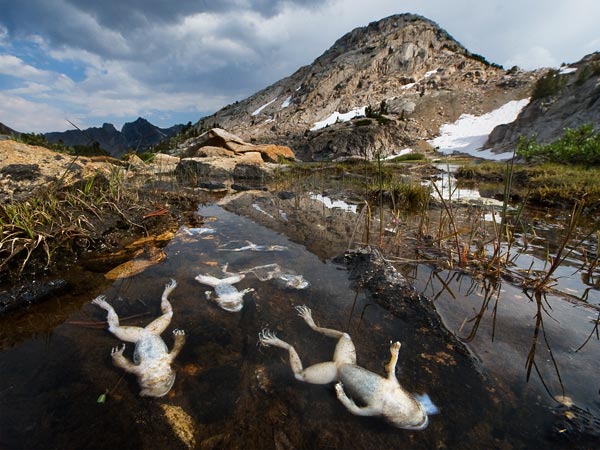 Is there a new discovery that might become a weapon in the battle against chytrid fungus?
Chytrid was identified in the 90s as a threat to the existence of frogs and other amphibians, and since then, scientists estimate that more than 300 species have been wiped out by it. A current National Geographic article quotes conservation biologist as saying, "This pathogen is bad news. It's worse news than any other pathogen in the history of life on Earth as far as we know it."
One of the greatest challenges in understanding the fungus has been why it seems to persist in ponds even after all the frogs have died. Now, scientists say they may have at least part of that mystery solved:
Researchers saw it happen many times and were perplexed: If all of a pond's amphibians were wiped out, and a few frogs or salamanders came back and recolonized the pond, they would also die—even though there were no amphibians in the pond to harbor the disease.
One possible reason is that chytrid infects other animals. For a study published today in Proceedings of the National Academy of Sciences, Taegan McMahon, a graduate student in ecology at the University of South Florida in Tampa, looked at some possible suspects and focused on crayfish, those lobsterlike crustaceans living in freshwater.
[...]
The fungus seems to be able to dine on crayfish then leap back to amphibians when it gets a chance. No one knows for sure where the fungus originally came from or why it's been such a problem in recent decades, but this research suggests one way that it could have been spread. Crayfish are sometimes moved from pond to pond as fish bait and are sold around the world as food and aquarium pets.
Read the complete article here.
Photo: National Geographic
Monday, December 17 2012
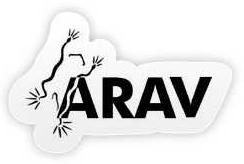 kingsnake.com and the Association of Reptilian and Amphibian Veterinarians (ARAV) are partnering to launch a reptile and amphibian veterinary locator service to help people locate local medical services and treatment for their cold-blooded pets.
The full system will be available in 2013, but the current beta version offers links and contact information on reptile and amphibian vets who are members of the ARAV in the United States and Canada. Under the new locator system, herp veterinarians may be located by state or province, or by zip or postal code. Plans for the final release include code that will allow anyone to add the reptile vet locator to their website or page.
"I am looking forward to this very sensible and powerful collaboration." said ARAV webmaster Dr. Katie Heinz-Taheny "The 'portable' search on your page looks good, and will reach an even greater number of herp owners."
The vet locator is one of the many projects in the works stemming from conversations at the September NRAAC Reptile Law Symposium and Workshop in Houston. More collaborative projects are expected to be announced in the coming year between many of the participating companies and organizations. Plans for the 2013 NRAAC conference at the National Zoo in Washington D.C. are scheduled to be announced later this week.
To try out the beta Reptile and Amphibian Vet Locator, visit http://kingsnake.com/vets.html. The full version will be released in January.
Thursday, December 13 2012
 Who doesn't like going to the zoo? For many, their first experience with reptiles and amphibians was at the zoo. I still remember when I was a kid visiting the Cincinnati and Indianapolis Zoos, where the giant tortoises were among my favorites. It left a lasting impression on me and growing up, I never turned down a trip to the zoo.
Now that I'm an adult, when I'm traveling I still like to try to visit the local zoo or aquarium. Over time, I've managed to visit dozens here in the States and in Europe. As an out of towner, however, I often find it difficult to find basic information on the zoo and its location, and without relying on a cab to get there. Sometimes I've found myself lost in a foreign city, wandering about in a rental car asking locals for directions.
kingsnake.com's newest feature, a zoo, aquarium, and wildlife park locator, should help resolve a lot of those issues. This new resource lists AZA-accredited facilities in the United States and Canada by state or province, as well as by zip and postal codes. The locator provides the street address, phone number, website link, and a map link for each facility, to help making your next trip to the zoo a better experience. Check out it out at http://kingsnake.com/zoos.html!
Wednesday, December 12 2012
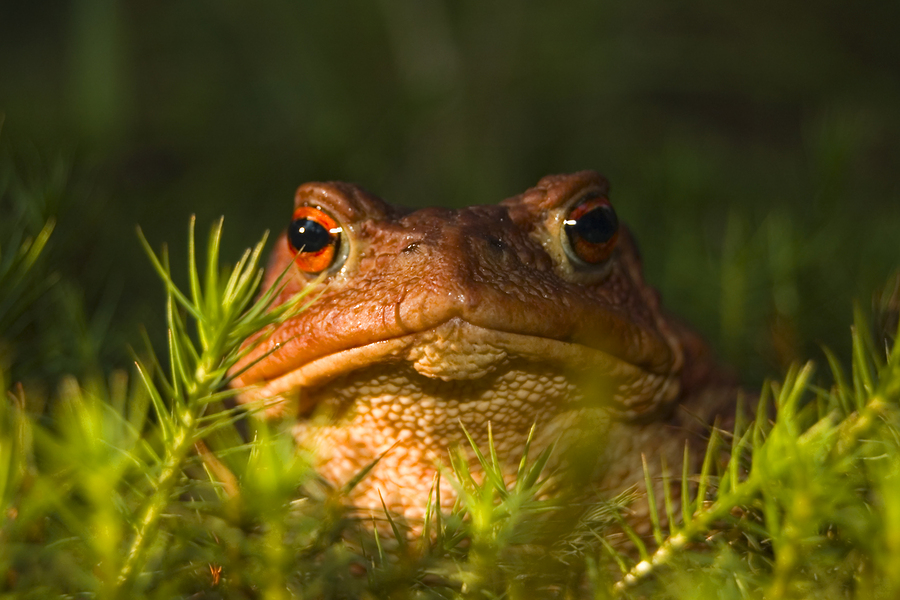 Russian scientists followed a folk remedy's trail and may have stumbled on a substance as potent as modern antibiotics secreted by the skin of frogs. From UPI:
An old Russian way of keeping milk from going sour by putting a frog in the bucket of milk has led to the finding of new antibiotic substances, scientists say.
Organic chemist A.T. Lebedev of Moscow State University and colleagues have identified a number of potential new antibiotic compounds in the skin of the Russian Brown frog, a study published in the American Chemical Society's Journal of Proteome Research reported.
[...]
In lab tests, they said, some of the substances performed as well against salmonella and staphylococcus bacteria as some prescription antibiotic medicines.
"These peptides could be potentially useful for the prevention of both pathogenic and antibiotic resistant bacterial strains while their action may also explain the traditional experience of rural populations," the researchers wrote.
Read the full story here.
Tuesday, December 11 2012
 Science geek? Amphibian lover? Science geek? Amphibian lover? Check out "Culture of an amphibian killer" from Phys.org, an in-depth look at chytridiomycosis, a fungus devastating worldwide amphibian populations. Read more...
More bad news for amphibians: More than 300 amphibians, including some rare frogs, died from the effects of a massive fire at a Polish zoo. Read more...
Dozens of box turtles have fallen victim to ranavirus disease in West Virginia. From WVGazette.com:
Siegel and his Towson colleagues found that an alarming number of turtles -- which can live to be 50 or older and normally have a 98 percent survival rate from year to year -- were dying at the relocation area near the construction site. Thirty-one of the 123 turtles outfitted with the transmitters and released there were found dead within a three-year period. Cars or construction equipment killed three of the turtles, but the rest were felled by disease, which turned out to be ranavirus in 27 cases.
"Finding even one dead turtle is unusual," Siegel said in a Washington Post story about the die-off that appeared earlier this year. "Finding over 27 dead turtles in a two-to-three-year period was bizarre."
In addition to killing the Maryland box turtles, ranavirus is believed to have been the cause of death of nearly every tadpole and young salamander in the study area since spring of 2010.
Get the full story here.
Monday, December 10 2012
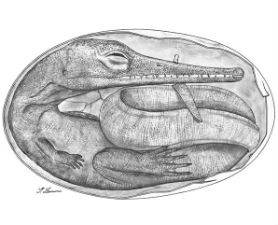 Aquatic reptiles that pre-dated the dinosaurs gave birth to live young and may have been good parents.
In a study published in the current issue of Historical Biology: An International Journal of Paleobiology, scientists look at the fossil records of a species of aquatic reptile known as the mesosaur, which lived around 280 million years ago on the supercontinent Pangaea, which later split into the land masses that include South America and South Africa.
The fossils include retained embryos, suggesting the animals gave bith to live young rather than laying eggs as dinosaurs did. This is often associated with greater levels of parental care being given to the young, something the fossil record also supports, because mesosaurs of various ages were all found together.
From NBC News:
Mesosaurs, and even their earlier ancestors, possibly "were not able to produce hard-shelled eggs, at least for the first several million years of their evolution," lead author Graciela Piñeiro, a paleontologist at Uruguay's Facultad de Ciencias, told Discovery News. "After the recent discovery of mesosaur embryos, we can state with a high degree of confidence that embryo retention developed early in amniote evolution, given that mesosaurs are among the basal-most reptiles and that they date from the Early Permian around 280 million years ago."
Piñeiro and colleagues Jorge Ferigolo, Melitta Meneghel and Michel Laurin recently discovered the exceptionally well-preserved mesosaur embryos at sites in Uruguay and Brazil. The environmental conditions at the locations allowed for the preservation of soft tissues, nerves and blood vessels, she said.
Read the full story here.
Image: Graciela Piñeiro/NBC News
Friday, December 7 2012
When it comes to super powers, the animal kingdom has comic book heroes beat cold.
The Smithsonian has put together a slideshow of animals whose punch packs the most power, including a sticky-pawed little gecko who could out-climb Spiderman with one paw tied behind his back -- as long as it wasn't raining.

Check out Supergecko and the rest of the Supercritters here.
Wednesday, December 5 2012
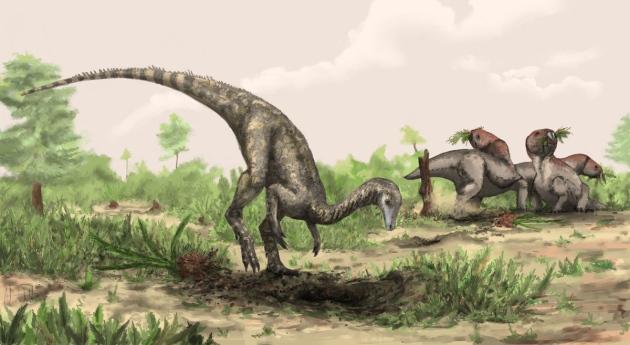 News of the most ancient dinosaur ever discovered broke today, as researchers announced the identification of what they believe is a dinosaur 15 millions years older than any previously identified.
Dubbed Nyasasaurus parringtoni, he was around the size of a Labrador retriever, according to University of Washington palaeontologist Sterling Nesbitt. Read more...
Cold-stunned sea turtles were transported in a donated mercy flight by pilots Gary Davis and Neil McCann. Davis owns Charleston-based Davis Air, Inc. More than 100 cold-stunned sea turtles have been discovered in New England waters since Monday alone, creating a crisis situation for wildlife agencies attempting to care for them. Read more...
And from the California Academy of Sciences, a music video about the world's more than 7,000 kinds of amphibian, as sung by Conor Loughridge and the Wiggly Tendrils. Go watch!
Tuesday, December 4 2012
 The United States has been in the forefront of imposing sanctions on trade with Iran, but draws the line when it comes to a trade ban that might prevent them from treating soldiers bitten by snakes in Afghanistan.
From BusinessInsider.com:
Despite U.S.-led international sanctions imposed to cripple Iran's economy, the Defense Department has purchased about 115 vials of antivenom made by Iran's Razi Vaccine & Serum Research Institute from middlemen for about $310 apiece since January 2011.
Questions from the WSJ have prompted the Pentagon to investigate whether the purchases violate rules of the sanctions and require a waiver from the U.S. Treasury Department.
[...]
"We make this to save lives, and it doesn't matter if the person is Iranian or Afghan or American," Hadi Zareh, lead researcher in Razi's antivenin department, told the [Wall Street Journal]. "We are happy to hear we have saved a person's life, even an American soldier."
Read more...
Monday, December 3 2012
 An EgyptAir flight was reportedly forced to make an emergency landing when a snake hidden in a passenger's luggage bit him.
Don't you just hate it when that happens?
Read more (although there isn't much more) here...
|



